Serpentine Gallery Pavilion 2012, by Herzog & de Meuron and Ai Weiwei
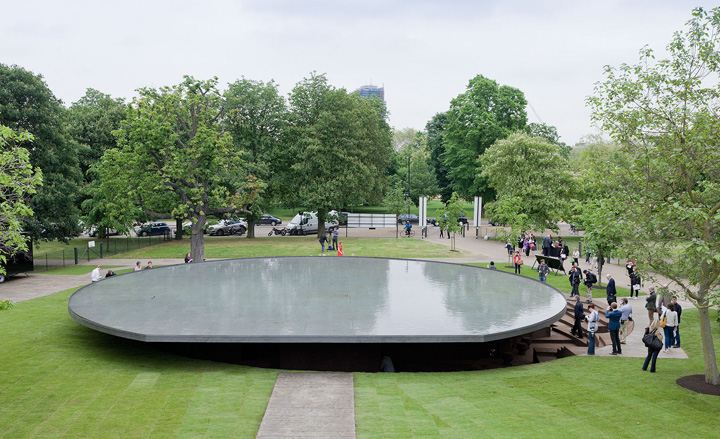
The Serpentine Gallery's annual Pavilion is a staple of the capital's summer architecture calendar and it rarely disappoints. Combining space for events, a shelter from the summer sun, an oasis of relaxation and thought-provoking design, it has over the years taken the shape of a helium balloon, a super-bright red steel structure and a mysterious hidden garden. It is also always designed by an exceptional contemporary architect, one that has yet to complete their first built work in London, making this temporary structure a much-anticipated architectural happening.
In many respects this year's commission is special. To start with, the people behind it have actually already had a strong presence in London; albeit not as a team. Swiss practice Herzog & de Meuron are the architects of much-celebrated projects such as the Tate Modern conversion (and now, its addition), while their partner, Chinese artist Ai Weiwei, saw his hotly-discussed Sunflower Seeds show open at the Tate's Turbine Hall in 2010.
Herzog & de Meuron and Weiwei have worked together to great acclaim before on the Beijing National Stadium for the 2008 Olympic Games but this is their first collaborative UK venture. And it seems fitting that their new project should open just in time for the 2012 Games in London.
'Every year, architects impatiently and jealously wait for the announcement of the Pavilion,' said Jacques Herzog at the opening. 'Working with Ai Weiwei again makes it even more intriguing'. Meanwhile, Weiwei made his presence felt at the launch with a video statement. 'As an artist, I am always very interested to put art, design, architecture and social change together to make new possibilities,' he said.
Given the team's combined reputation for innovation and creativity, it is no surprise that they flipped the pavilion concept on its head. Instead of creating a fully-fledged new structure, the team's design puts the focus on the previous pavilions, in a near-archaeological fashion.
In a quest to 'uncover' the former pavilions' foundations, the ground was dug up to form a geography of patterns, low walls and steps that the visitors can explore - and sit on. The whole surface is covered in cork, enhancing the space's acoustics, as well as giving a tactile quality (and distinct aroma) to the interior. Above the excavation are 12 columns (one representing each pavilion, including the 2012 one) that support a large floating platform roof. It hovers 1.4m above ground and holds a shallow pool of rainwater.
Taking the visitor below ground level and within the intriguingly sculptural landscape of the excavation, Herzog & de Meuron and Weiwei's design acts as an homage to the Serpentine's whole Pavilion program, inviting the crowds to discover the hidden footprints of the new structure's predecessors.

Beneath this, the team's design takes on a near-archeological fashion. In their quest to 'uncover' the former pavilion's foundations, the ground was dug up to form a geography of patterns, low walls and steps that visitors can explore...
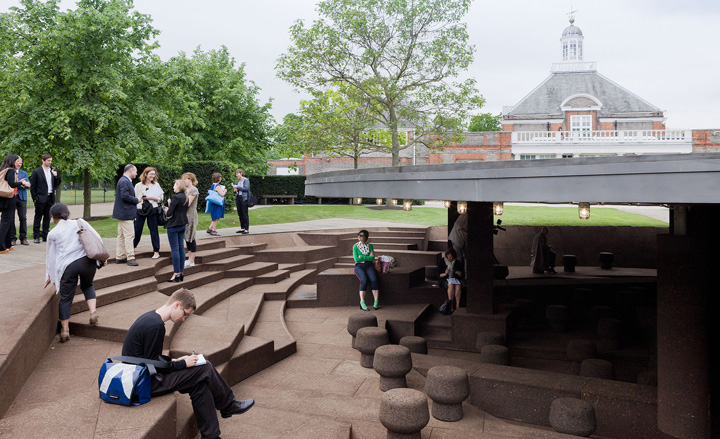
... and sit on. The whole surface is covered in cork, enhancing the space's acoustics, as well as giving a tactile quality (and distinct aroma) to the interior

Above the excavation are 12 columns (one representing each pavilion, including the 2012 one) that support the platform roof
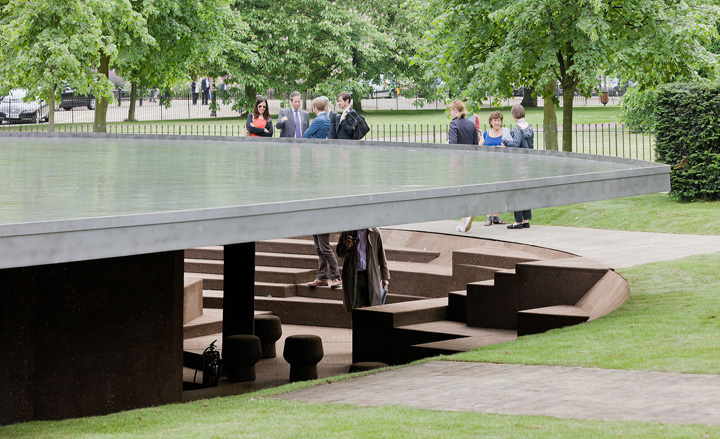
Taking the visitor below ground level and within the intriguingly sculptural landscape of the excavation, Herzog & de Meuron and Weiwei's design acts as an homage to the Serpentine's whole Pavilion program
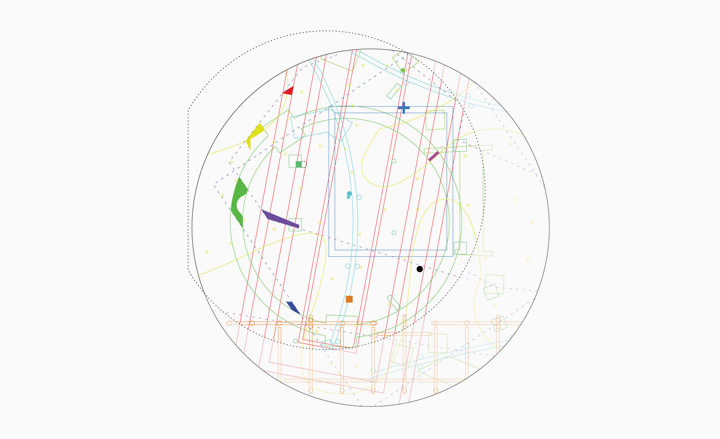
A sketch of the structure by Herzog & de Meuron and Ai Weiwei
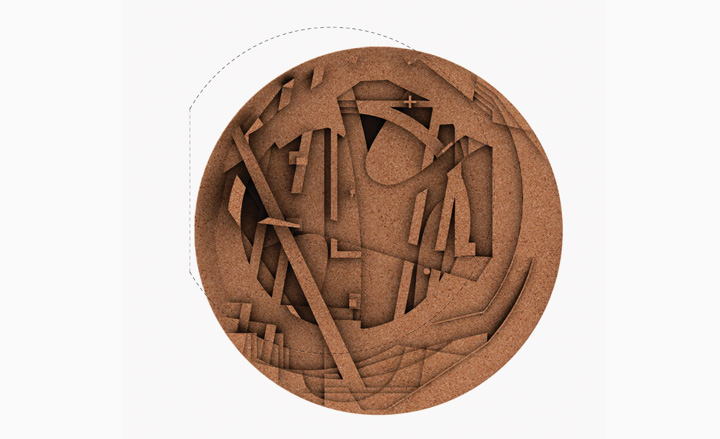
A sketch of the structure by Herzog & de Meuron and Ai Weiwei
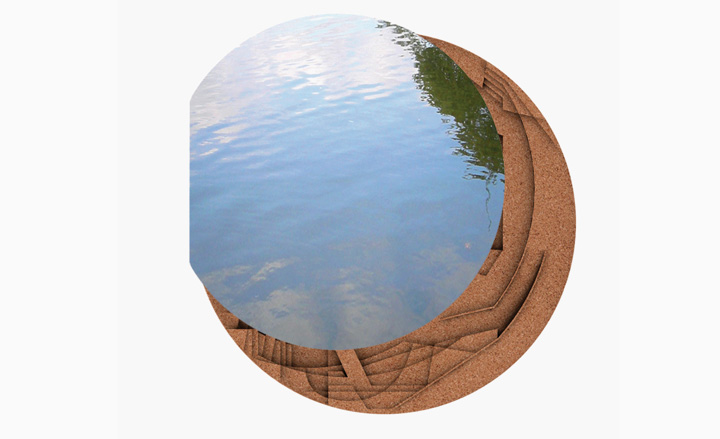
A sketch of the structure by Herzog & de Meuron and Ai Weiwei
ADDRESS
Serpentine Gallery
Kensington Gardens
London W2 3XA
Receive our daily digest of inspiration, escapism and design stories from around the world direct to your inbox.
Ellie Stathaki is the Architecture & Environment Director at Wallpaper*. She trained as an architect at the Aristotle University of Thessaloniki in Greece and studied architectural history at the Bartlett in London. Now an established journalist, she has been a member of the Wallpaper* team since 2006, visiting buildings across the globe and interviewing leading architects such as Tadao Ando and Rem Koolhaas. Ellie has also taken part in judging panels, moderated events, curated shows and contributed in books, such as The Contemporary House (Thames & Hudson, 2018), Glenn Sestig Architecture Diary (2020) and House London (2022).
-
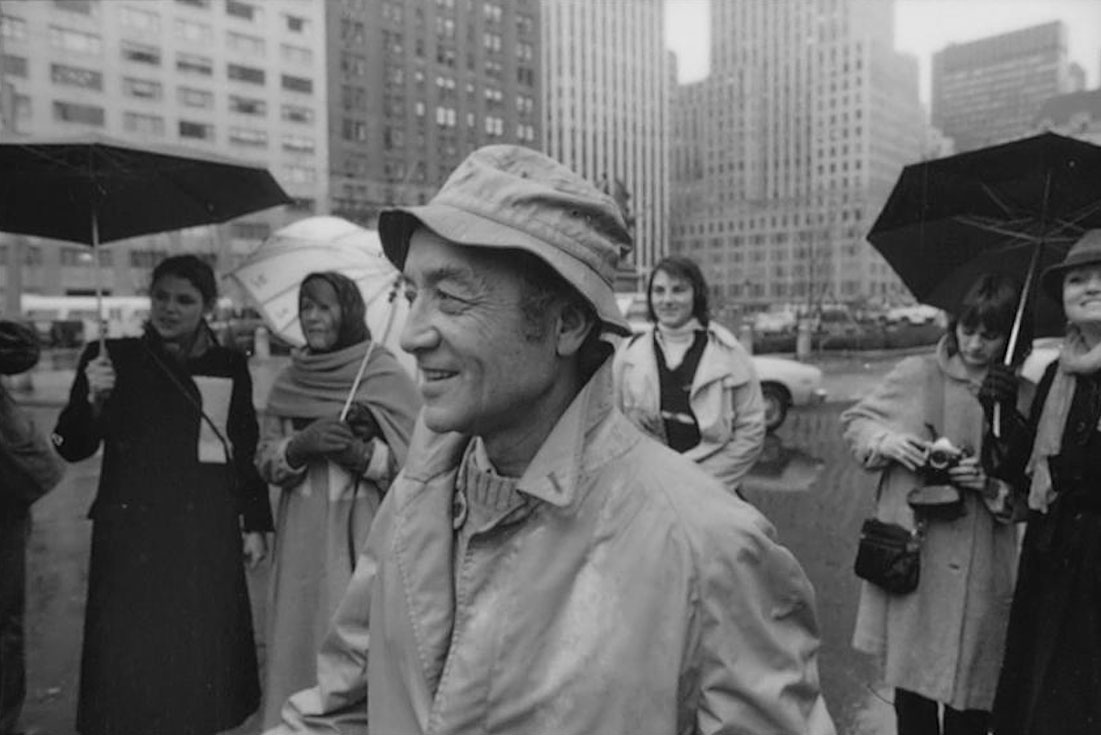 How Isamu Noguchi dissolved the boundaries between art, design and the city
How Isamu Noguchi dissolved the boundaries between art, design and the cityIsamu Noguchi shaped cities, interiors and everyday rituals through design: here’s everything you need to know about the interdisciplinary American modernist who believed art belonged in public life
-
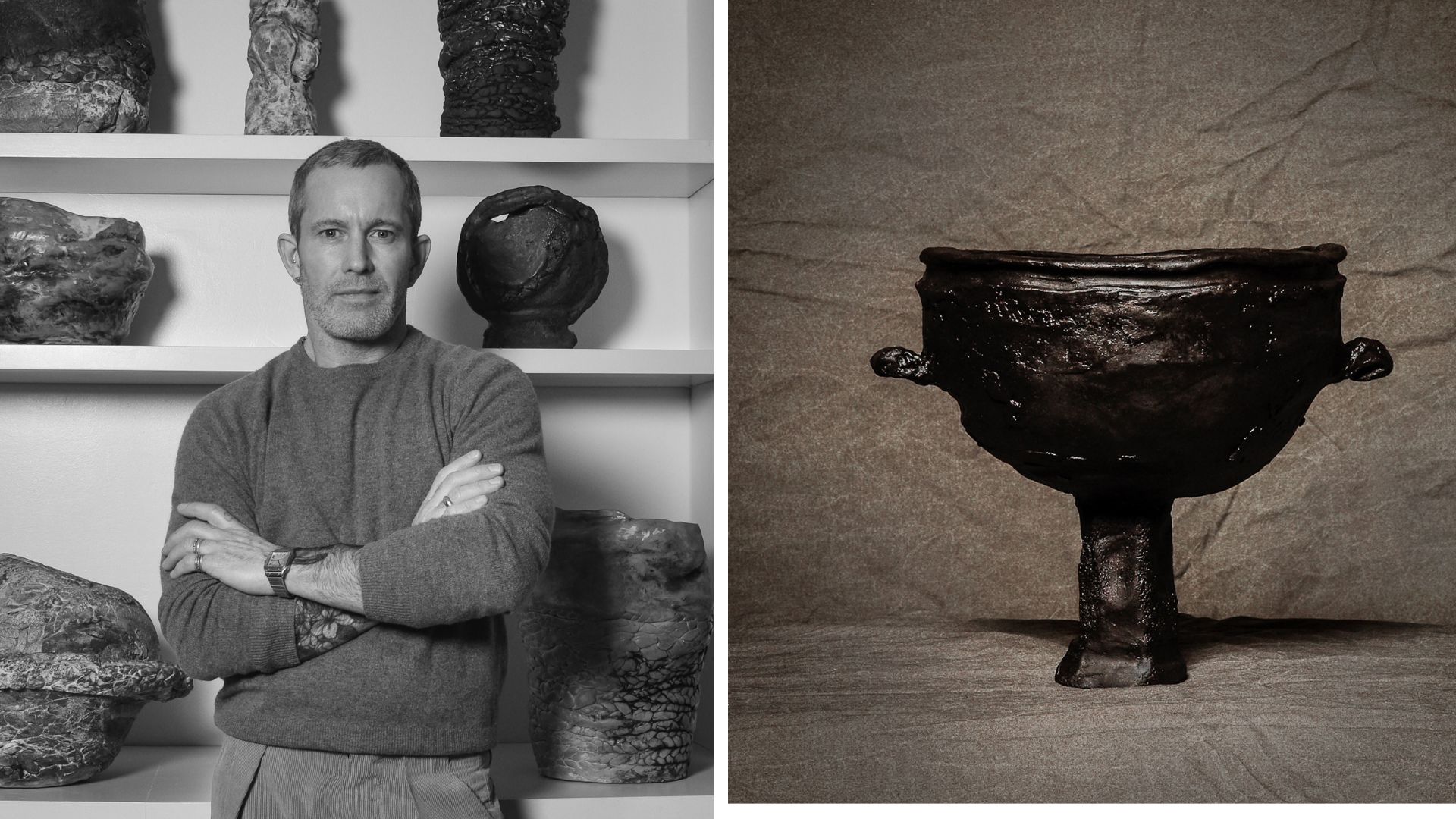 Photographer John Arsenault’s ceramic vessels prove it’s never too late to shift focus
Photographer John Arsenault’s ceramic vessels prove it’s never too late to shift focusAfter years creating portraits, the artist has revealed a series of intriguing and sexually-charged pieces in New York
-
 Wallpaper* Architect Of The Year 2026: Lina Ghotmeh, France
Wallpaper* Architect Of The Year 2026: Lina Ghotmeh, FranceAsked about a building that made her smile, Lina Ghotmeh – one of three Architects of the Year at the 2026 Wallpaper* Design Awards – discusses Luis Barragán’s Capuchin Convent Chapel and more
-
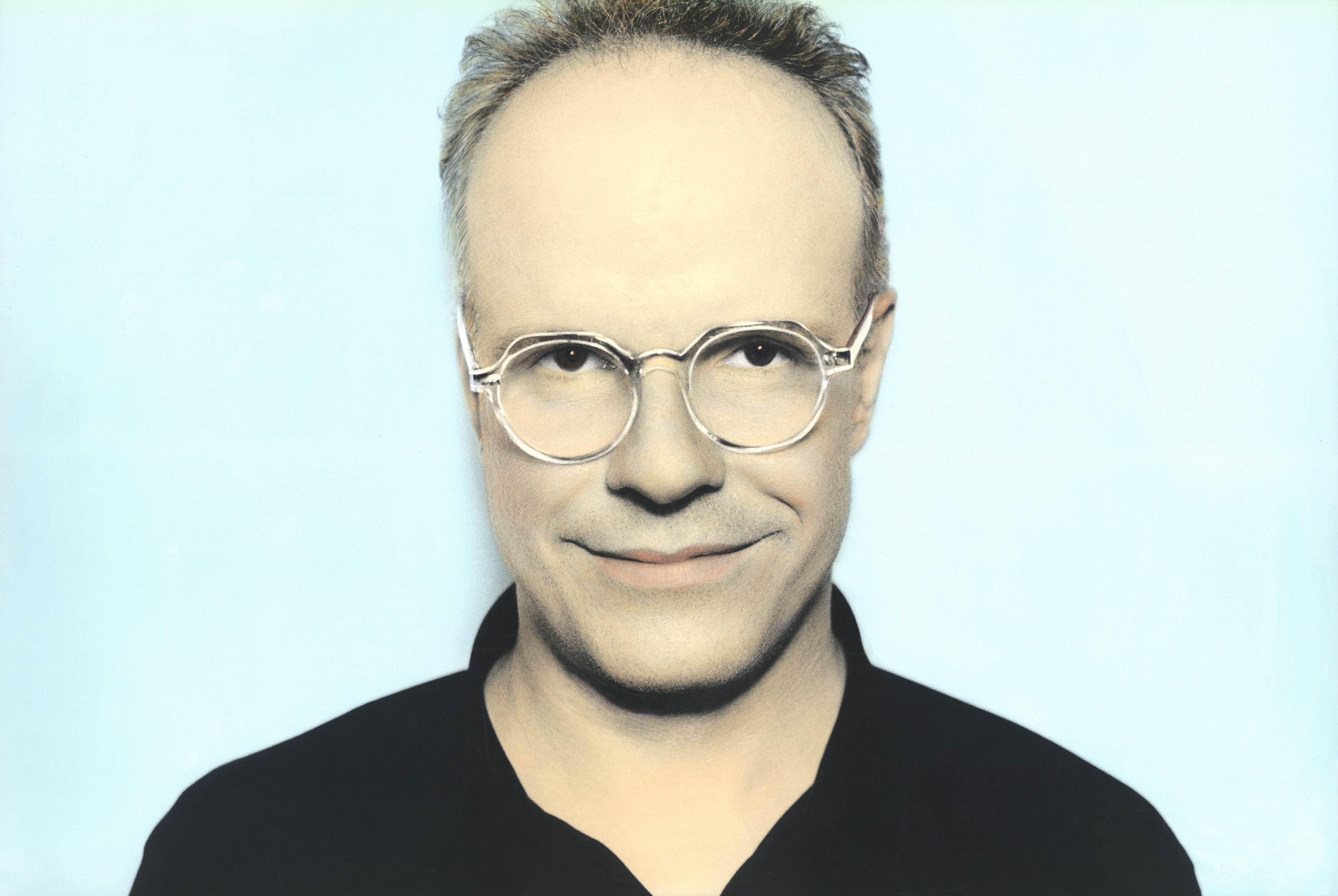 A life’s work: Hans Ulrich Obrist on art, meaning and being driven
A life’s work: Hans Ulrich Obrist on art, meaning and being drivenAs the curator, critic and artistic director of Serpentine Galleries publishes his memoir, ‘Life in Progress’, he tells us what gets him out of bed in the morning
-
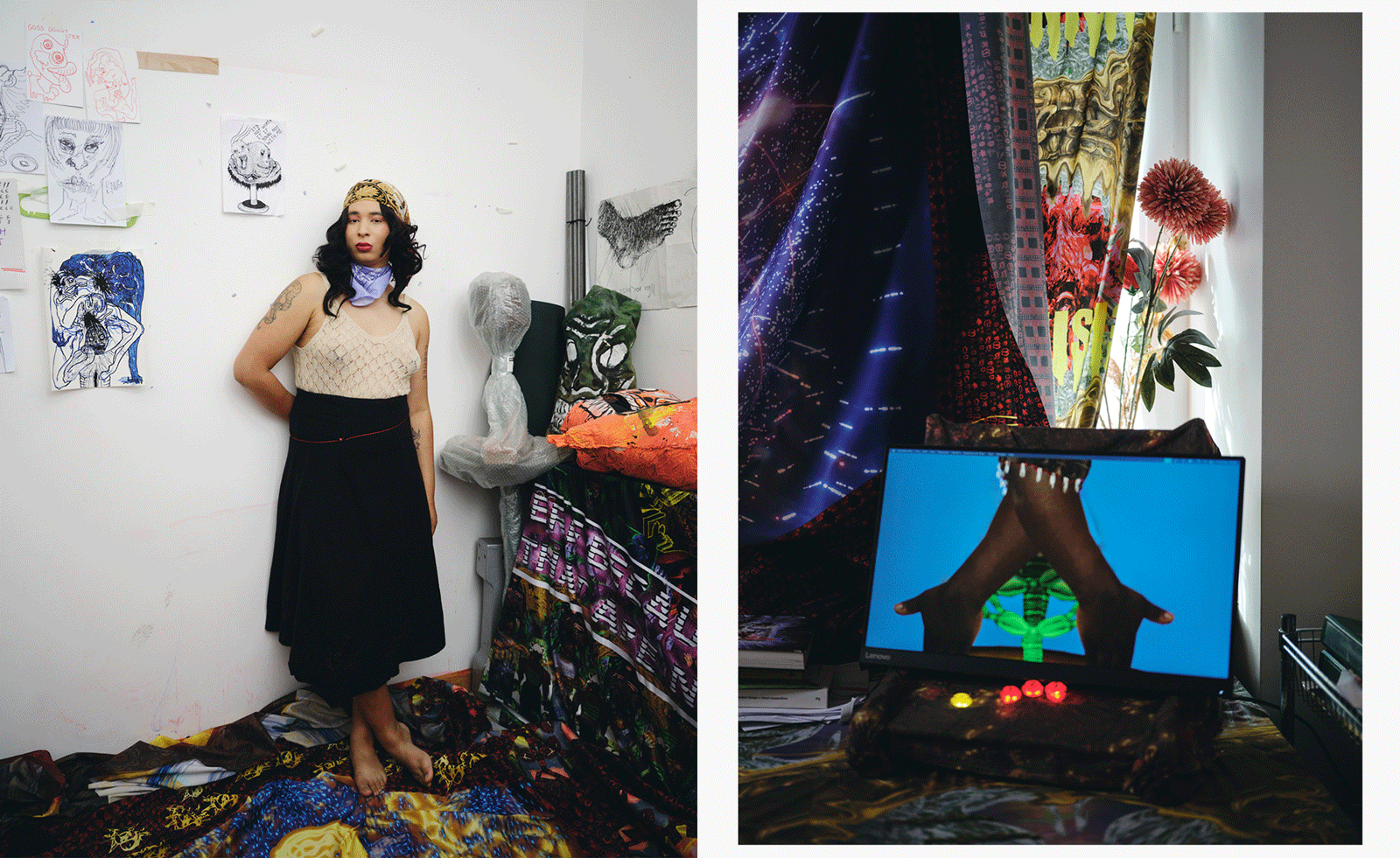 Danielle Brathwaite-Shirley’s multiplayer experience at London’s Serpentine invites visitors to connect in the real world
Danielle Brathwaite-Shirley’s multiplayer experience at London’s Serpentine invites visitors to connect in the real worldDanielle Brathwaite-Shirley rethinks a typical art gallery visit with a new exhibition at Serpentine which encourages viewers to get off the screen
-
 The Tate Modern is hosting a weekend of free events. Here's what to see
The Tate Modern is hosting a weekend of free events. Here's what to seeFrom 9 -12 May, check out art, attend a lecture, or get your groove on during the museum's epic Birthday Weekender
-
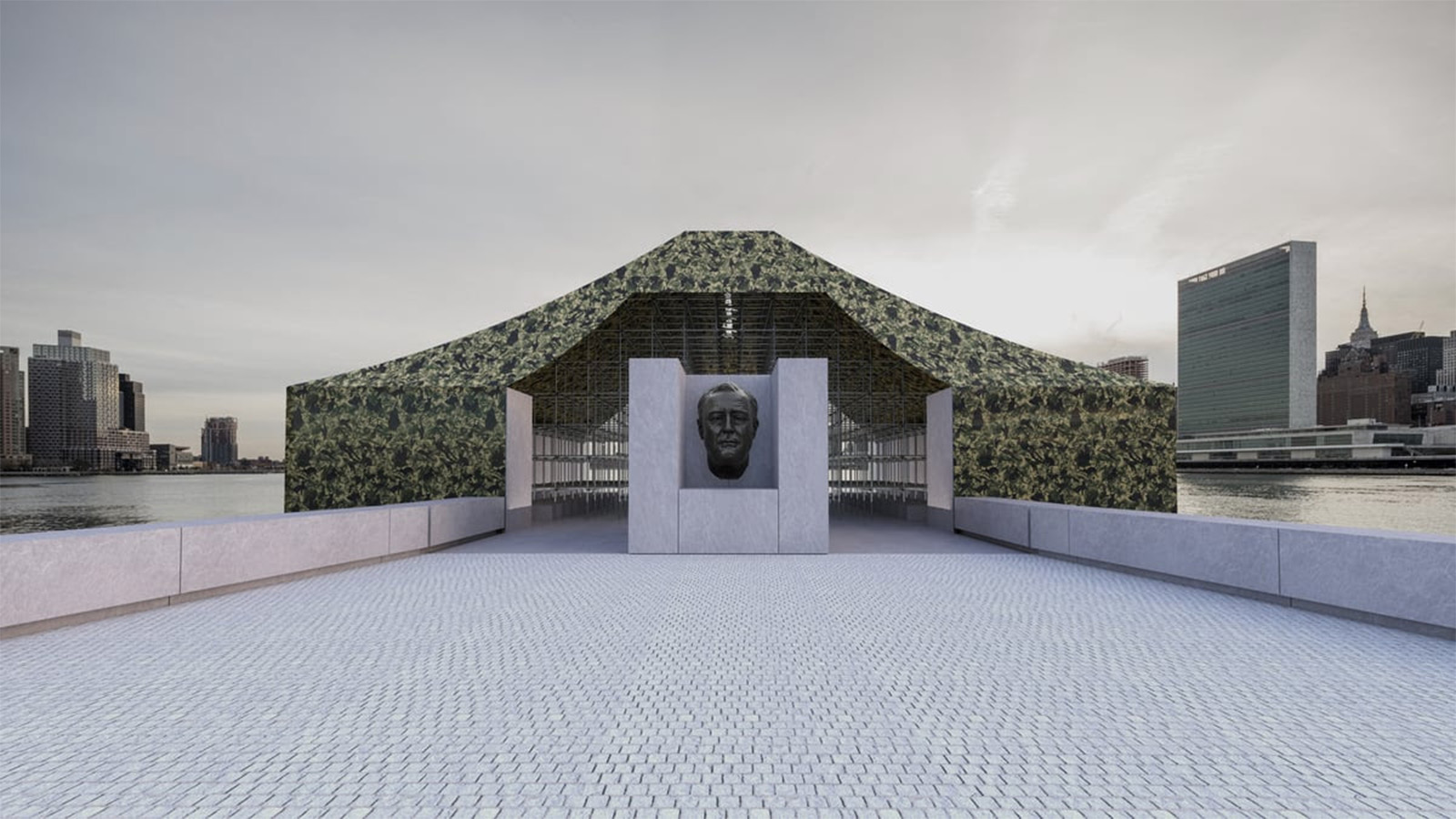 Ai Weiwei’s new public installation is coming soon to Four Freedoms State Park
Ai Weiwei’s new public installation is coming soon to Four Freedoms State Park‘Camouflage’ by Ai Weiwei will launch the inaugural Art X Freedom project in September 2025, a new programme to investigate social justice and freedom
-
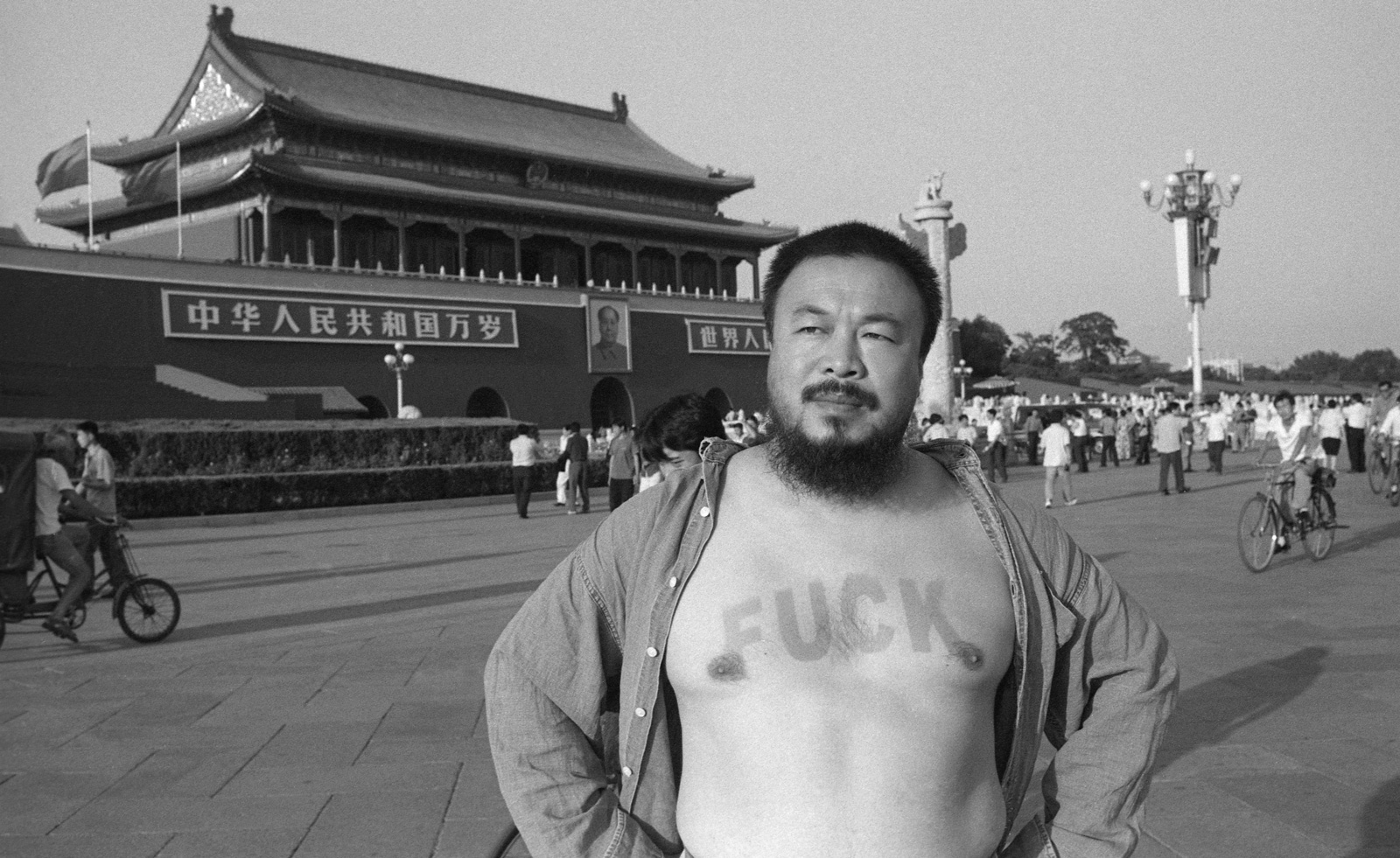 Ai Weiwei's major retrospective in Seattle is a timely and provocative exploration of human rights
Ai Weiwei's major retrospective in Seattle is a timely and provocative exploration of human rights'Ai, Rebel: The Art and Activism' of Ai Weiwei is on now at the Seattle Art Museum
-
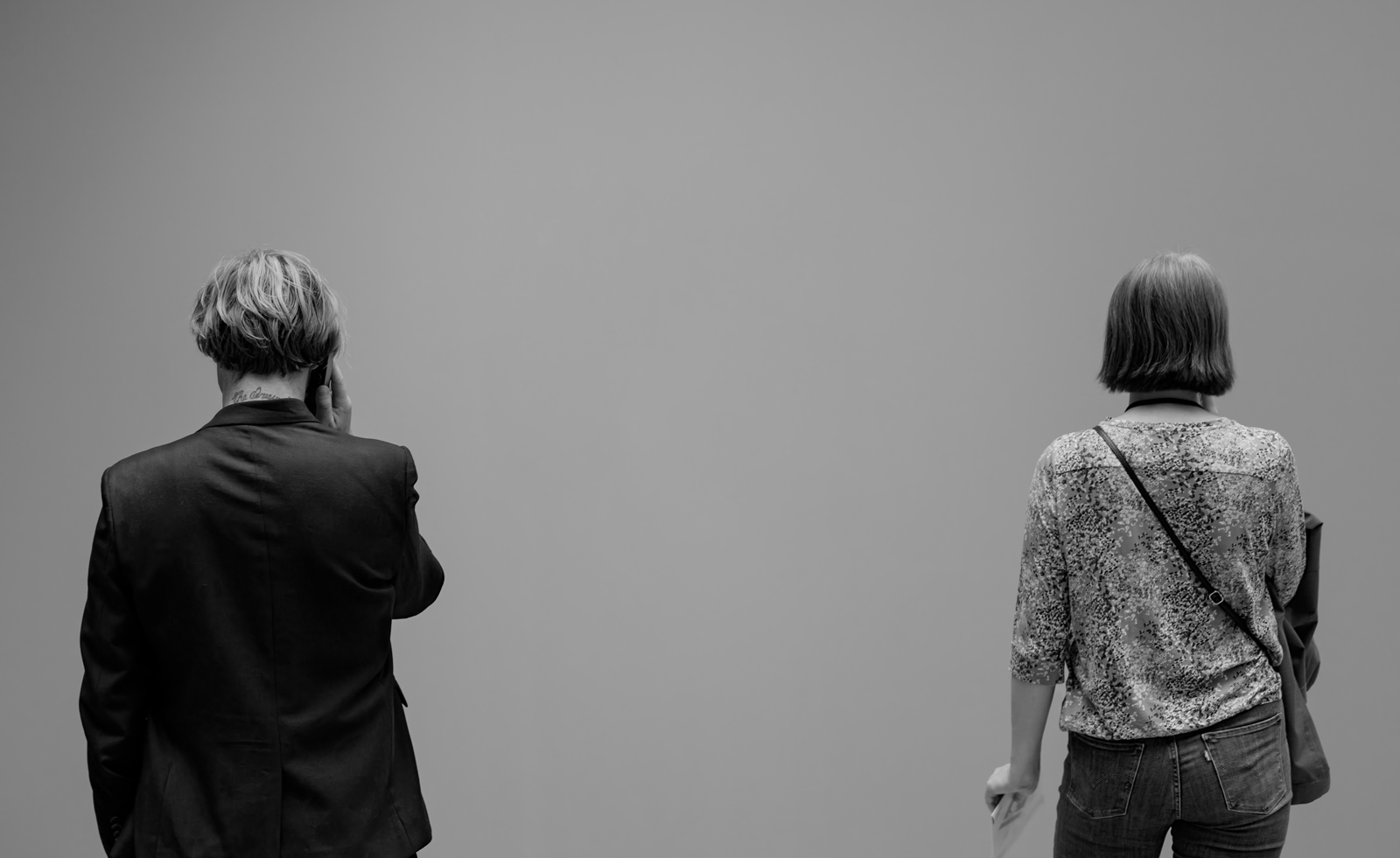 Looking at people looking at art: inside the mind of a gallery attendant
Looking at people looking at art: inside the mind of a gallery attendantVisitor experience workers at London’s Tate Modern, Serpentine, Barbican and V&A share what it’s like to watch people looking at art during a time of changing attention spans and rising vandalism
-
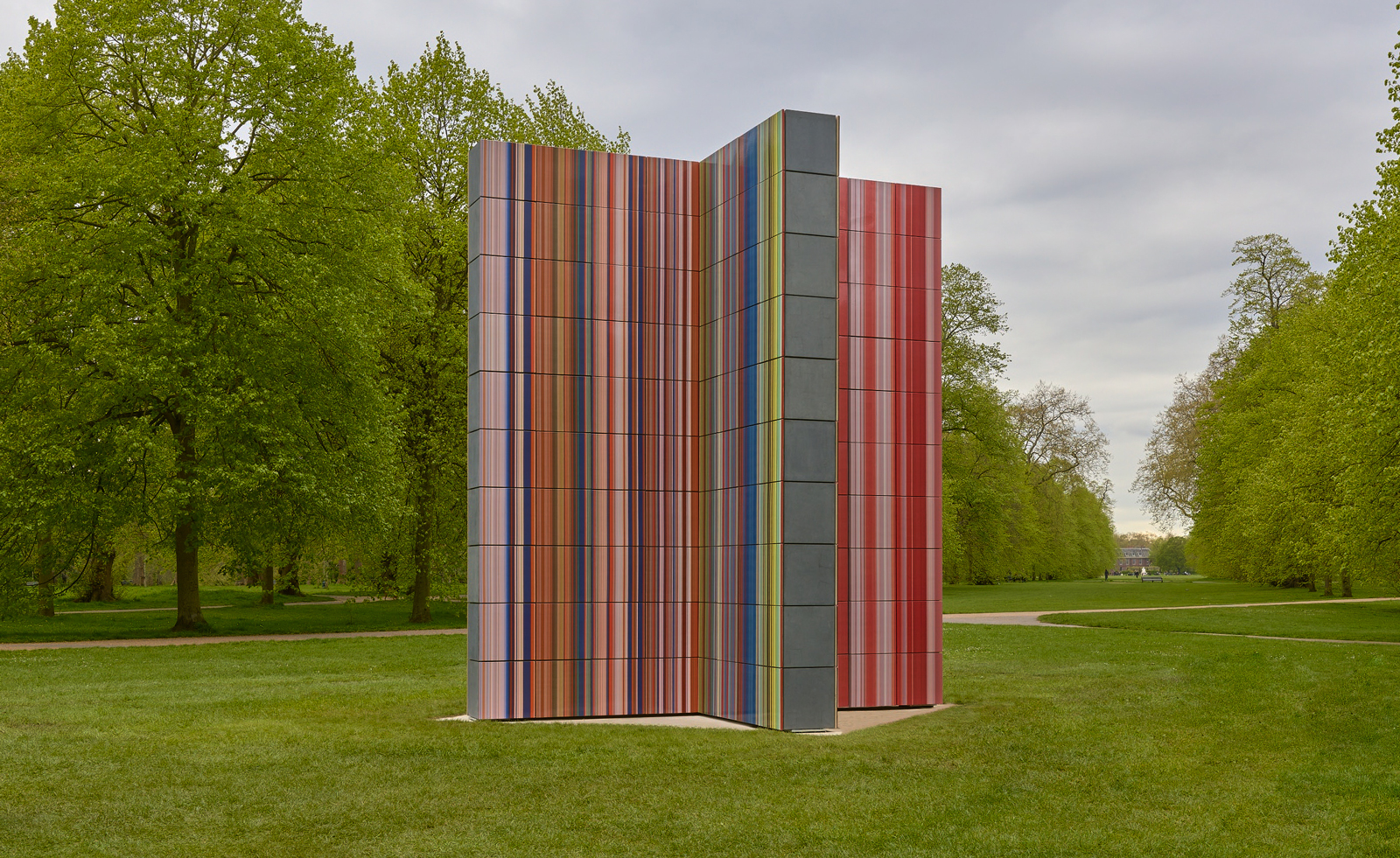 Gerhard Richter unveils new sculpture at Serpentine South
Gerhard Richter unveils new sculpture at Serpentine SouthGerhard Richter revisits themes of pattern and repetition in ‘Strip-Tower’ at London’s Serpentine South
-
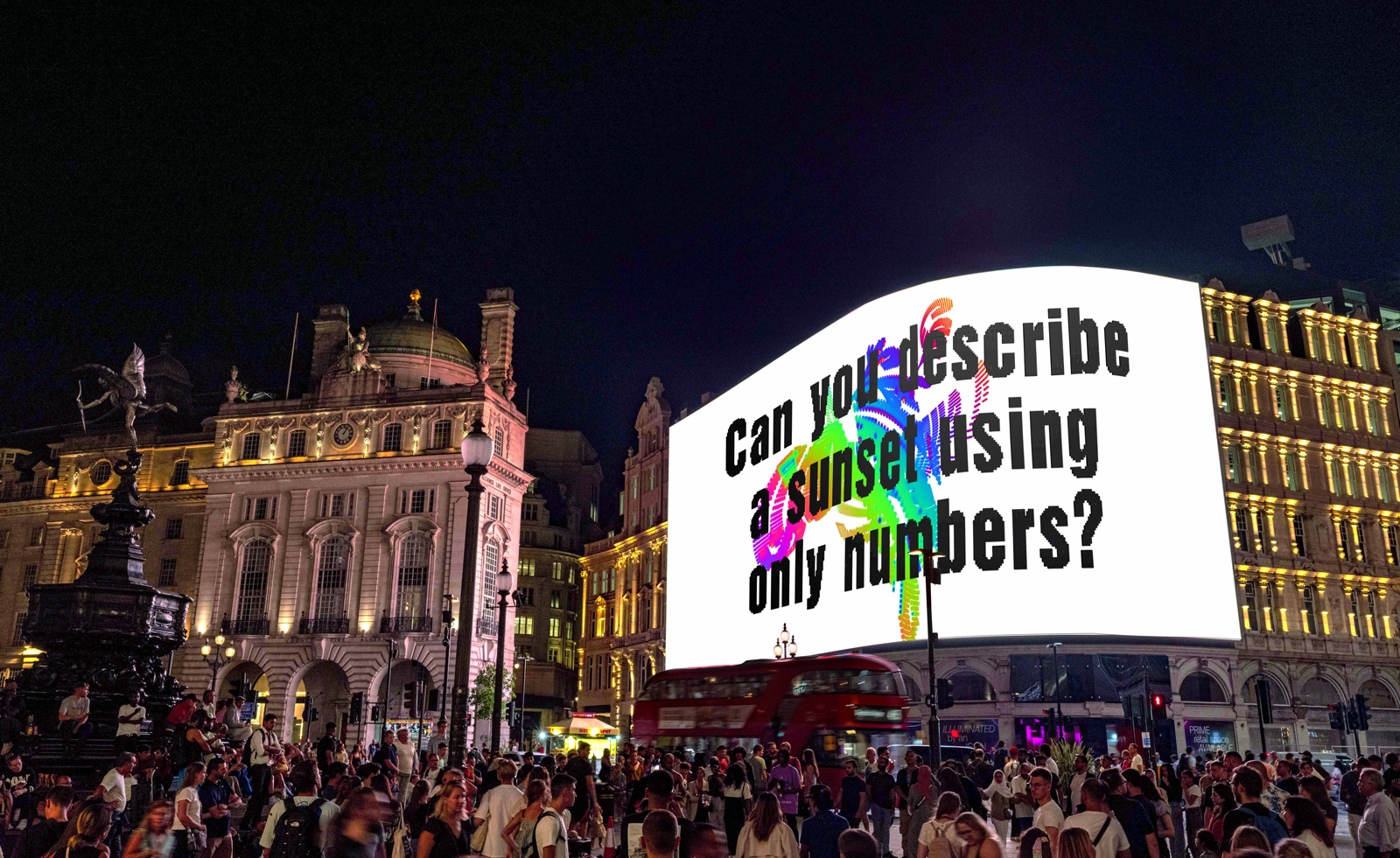 Ai vs AI: Ai Weiwei asks the big questions nightly in central London
Ai vs AI: Ai Weiwei asks the big questions nightly in central LondonAi Weiwei and Circa consider the role of the question in Piccadilly Circus, London